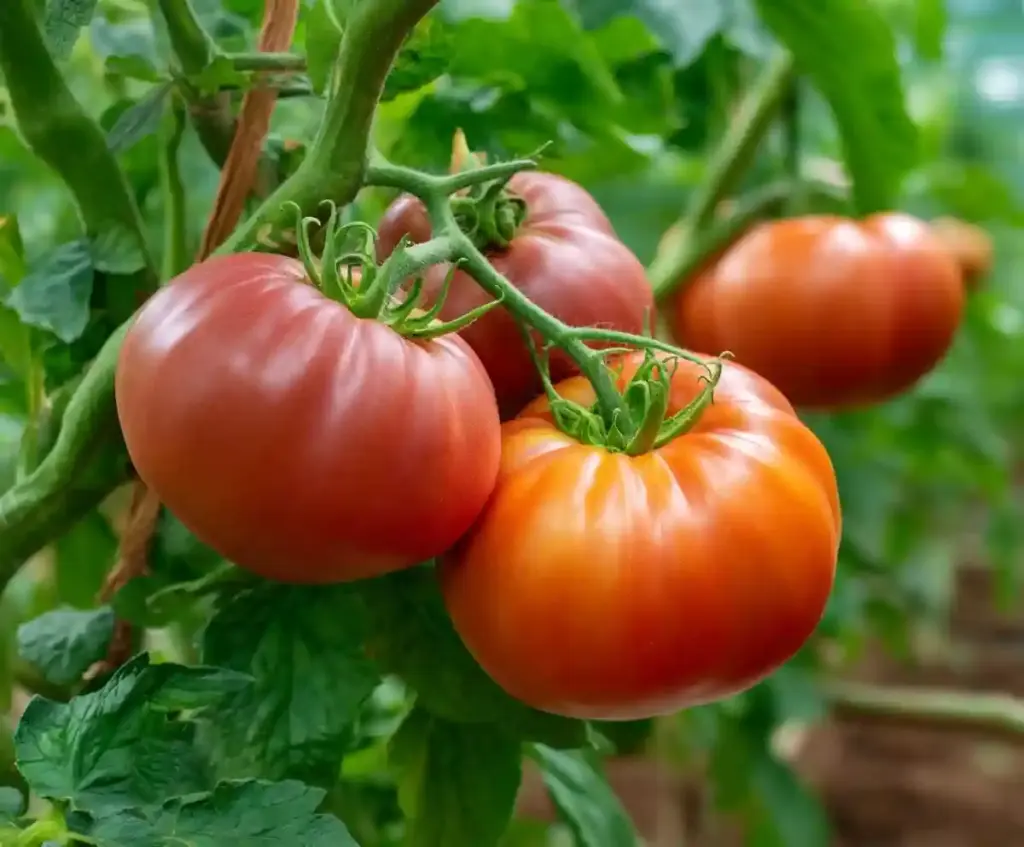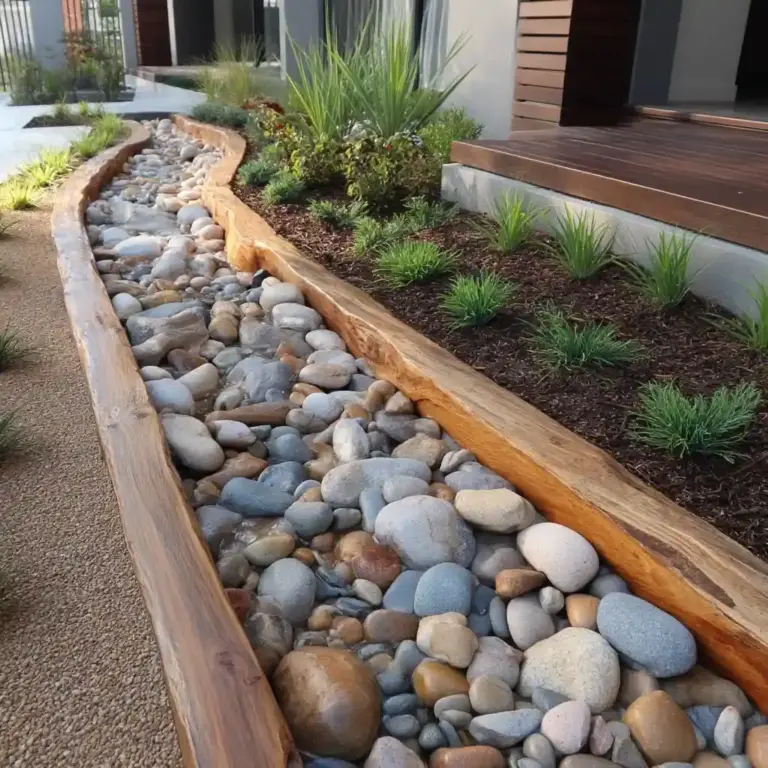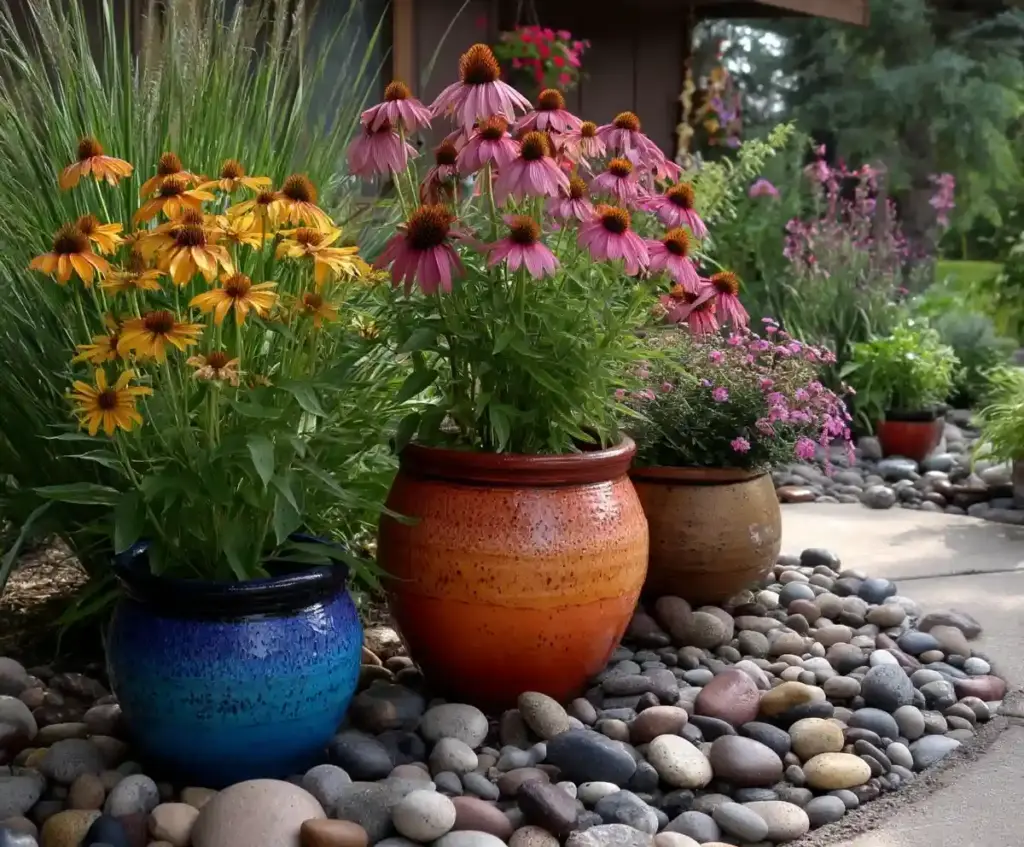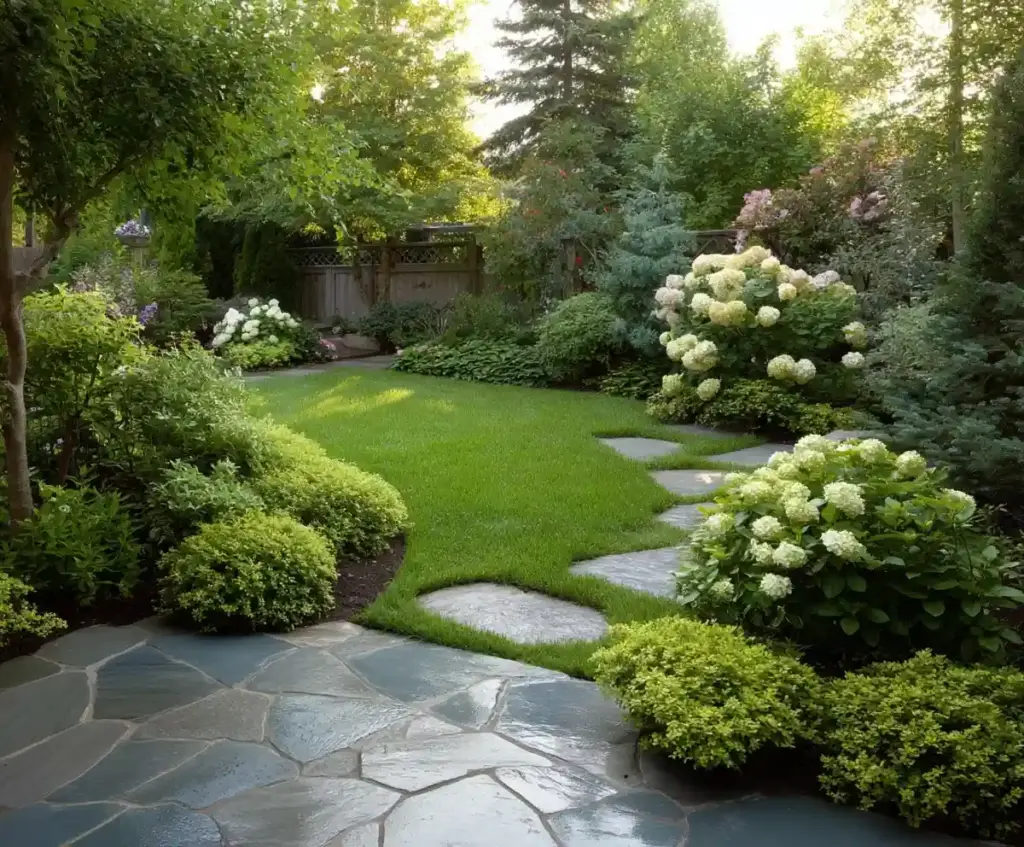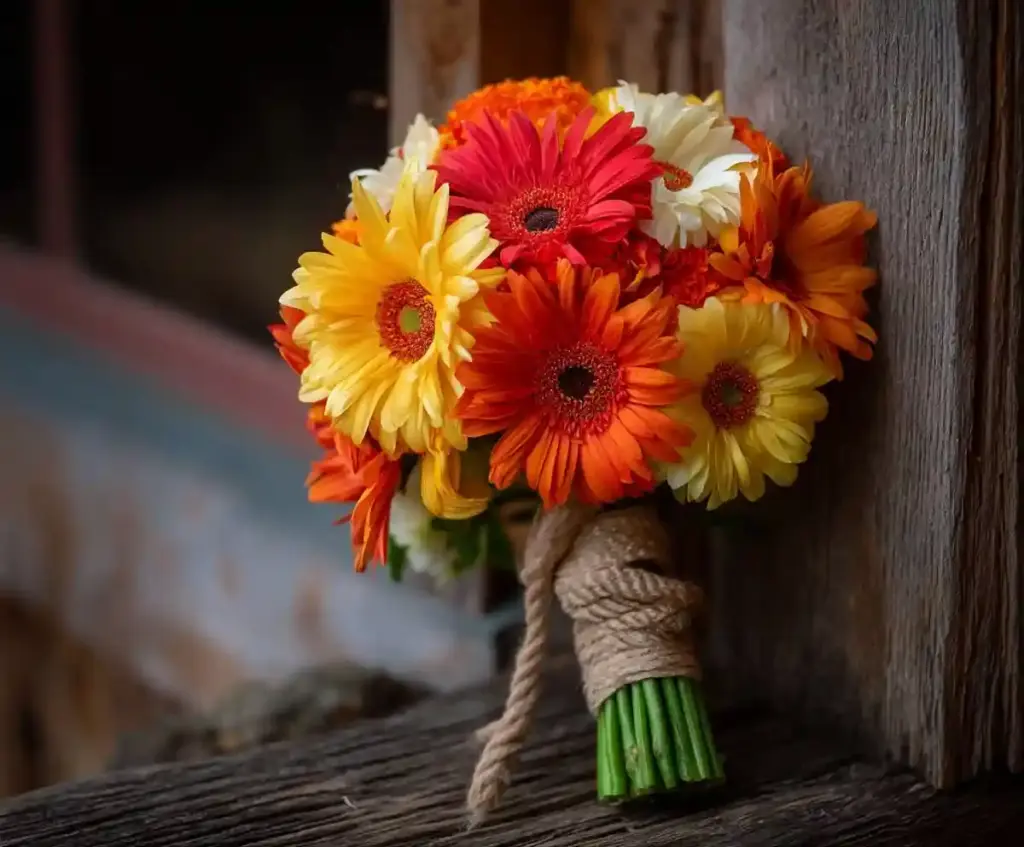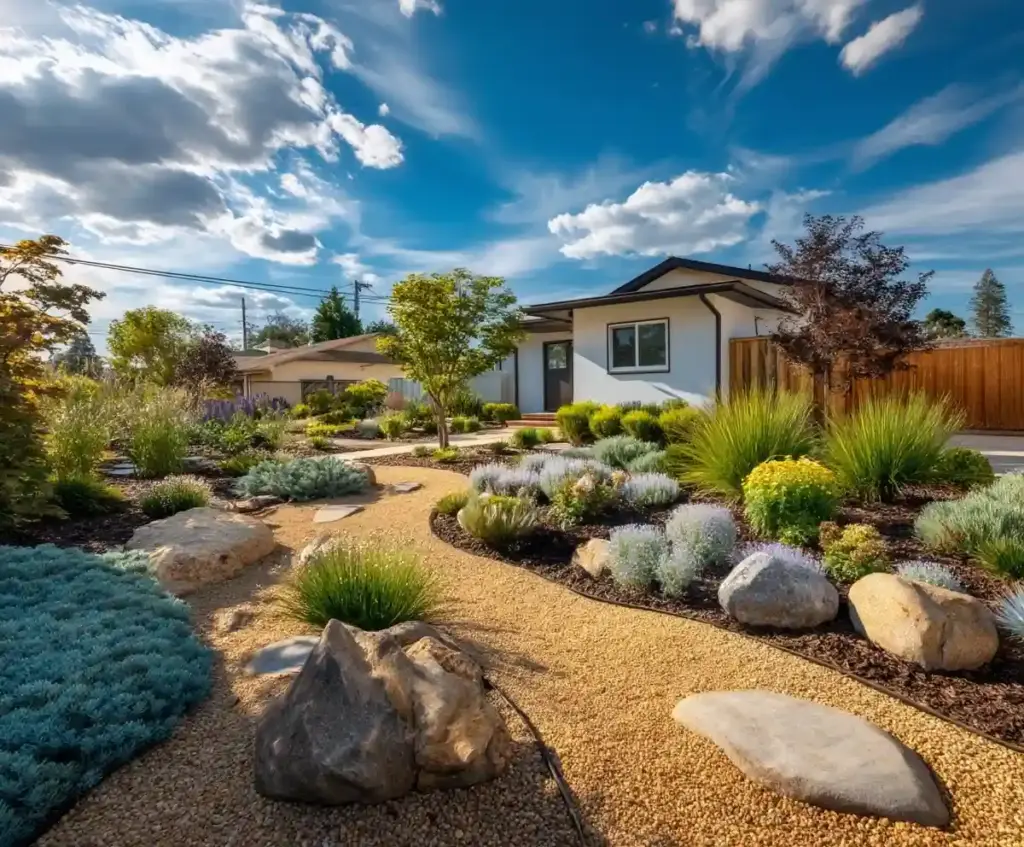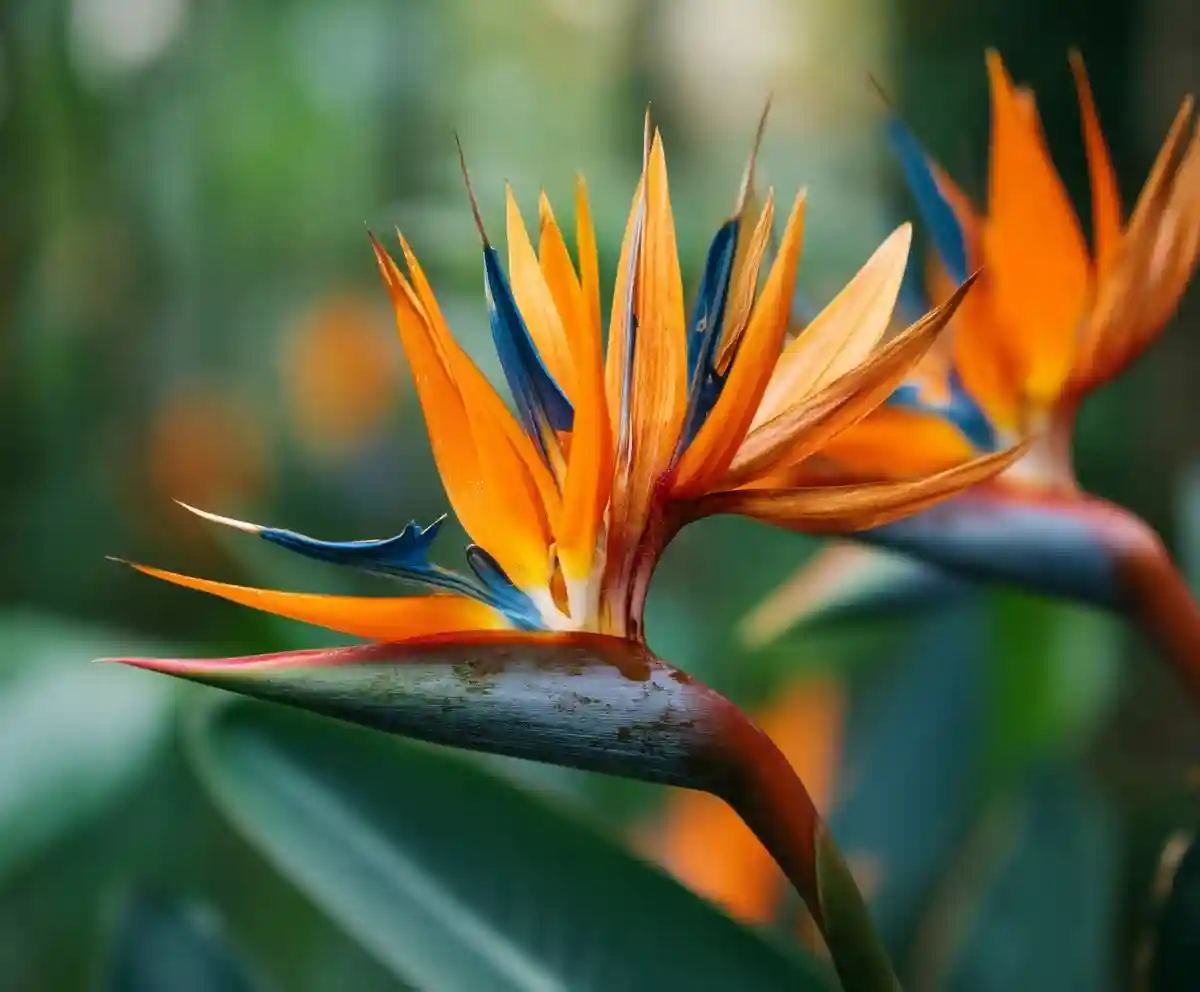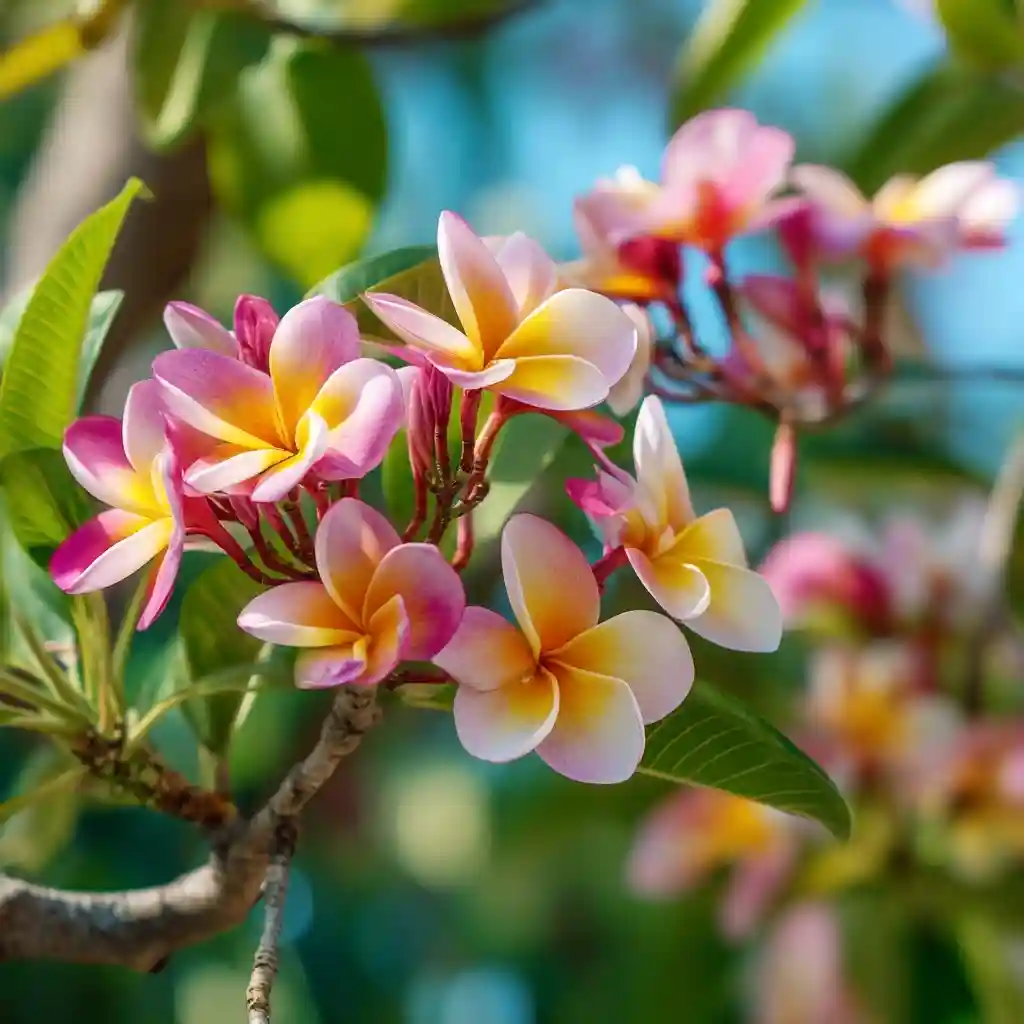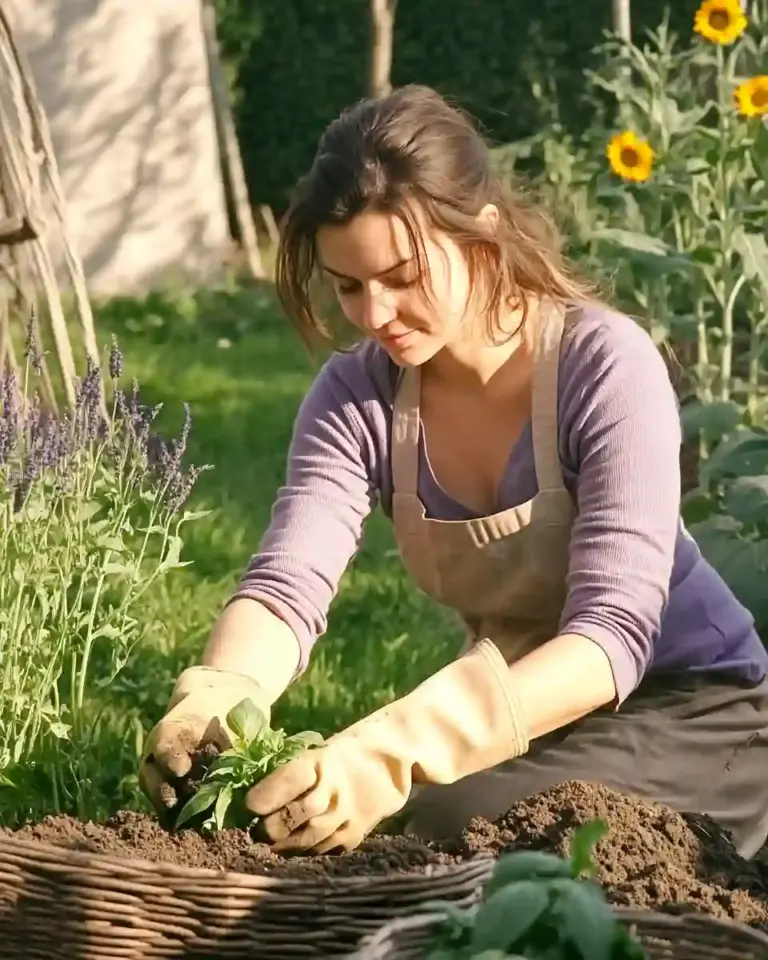Hawaiian tropical flowers are some of the most stunning and vibrant blooms in the world. From fragrant lei flowers to rare native species that grow only on the islands, these blossoms are an essential part of Hawaii’s natural beauty and culture. Their colors range from fiery reds and sunny yellows to delicate whites and soft pinks, creating a breathtaking tropical landscape.
Whether you’re strolling through lush botanical gardens or spotting wildflowers along coastal trails, these blooms reflect the islands’ unique biodiversity. Many are deeply tied to Hawaiian traditions, symbolizing love, peace, and the spirit of aloha.
Table of Contents
1. Plumeria Flower
The plumeria is one of the most iconic Hawaiian tropical flowers, instantly recognizable for its sweet fragrance and waxy petals. Commonly used in Hawaiian leis, this flower symbolizes friendship and new beginnings.
Plumerias bloom in a variety of colors, including white, yellow, pink, and deep red. They thrive in warm, sunny conditions and are most abundant during spring and summer. If you visit the islands during these seasons, you’ll likely see plumeria trees lining streets and gardens, filling the air with their tropical scent.
Tip: If you have a home garden in a warm climate, plumeria can be grown in pots, making them a perfect tropical accent.
2. Hawaiian Hibiscus Flower
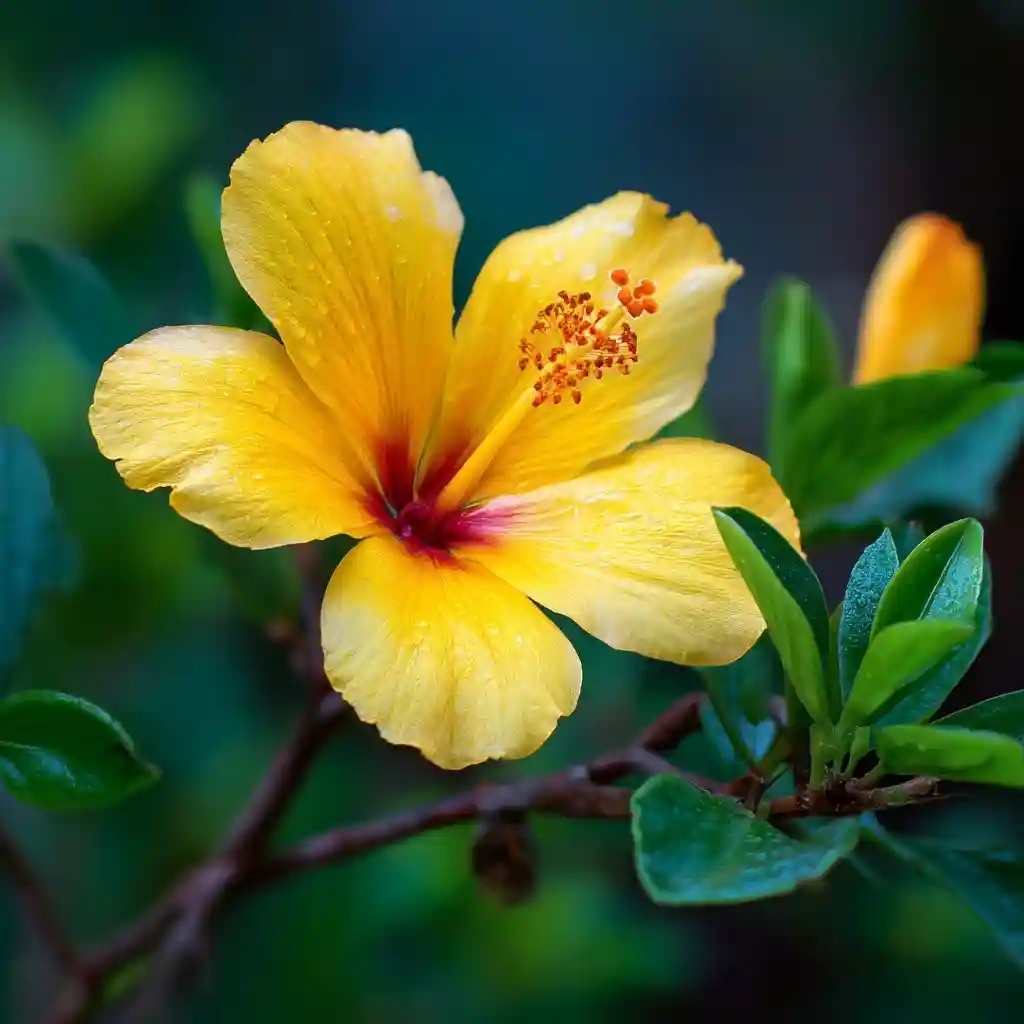
The Hawaiian hibiscus flower is a vibrant symbol of the islands and holds a special place in local culture. The yellow hibiscus (Hibiscus brackenridgei) is Hawaii’s official state flower, but you can find stunning varieties in red, orange, pink, and white across the islands.
Hibiscus blooms are large and showy, often lasting only a day or two, yet they bring a constant splash of color to tropical gardens. These flowers thrive in sunny areas and are commonly planted along walkways and fences, adding a natural, tropical charm to any landscape.
Culturally, hibiscus flowers are often worn behind the ear—traditionally on the left to indicate a relationship and on the right for those who are single.
3. Tropical Bird of Paradise
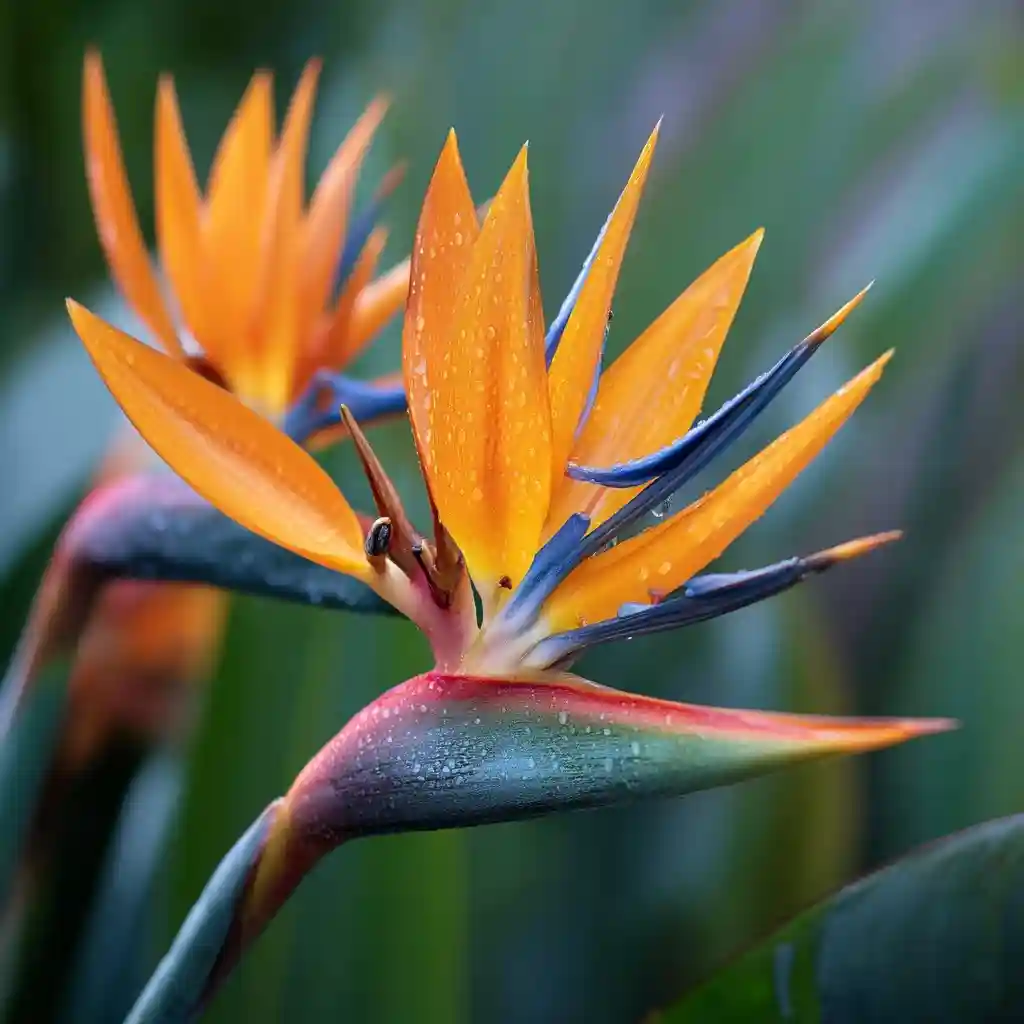
The tropical bird of paradise is one of the most striking Hawaiian tropical flowers, instantly recognizable for its bright orange and blue blooms that resemble a bird in flight. Though originally from South Africa, this flower thrives in Hawaii’s warm, humid climate and has become a popular feature in tropical landscapes.
Bird of paradise flowers grow on tall stems with lush, banana-like leaves, making them a dramatic addition to gardens and floral arrangements. They bloom throughout the year in Hawaii, adding vibrant color to resorts, parks, and home gardens alike.
Gardeners love this flower for its low maintenance and long-lasting blooms, which can also be cut for tropical flower arrangements that bring a piece of Hawaii indoors.
4. Pikake
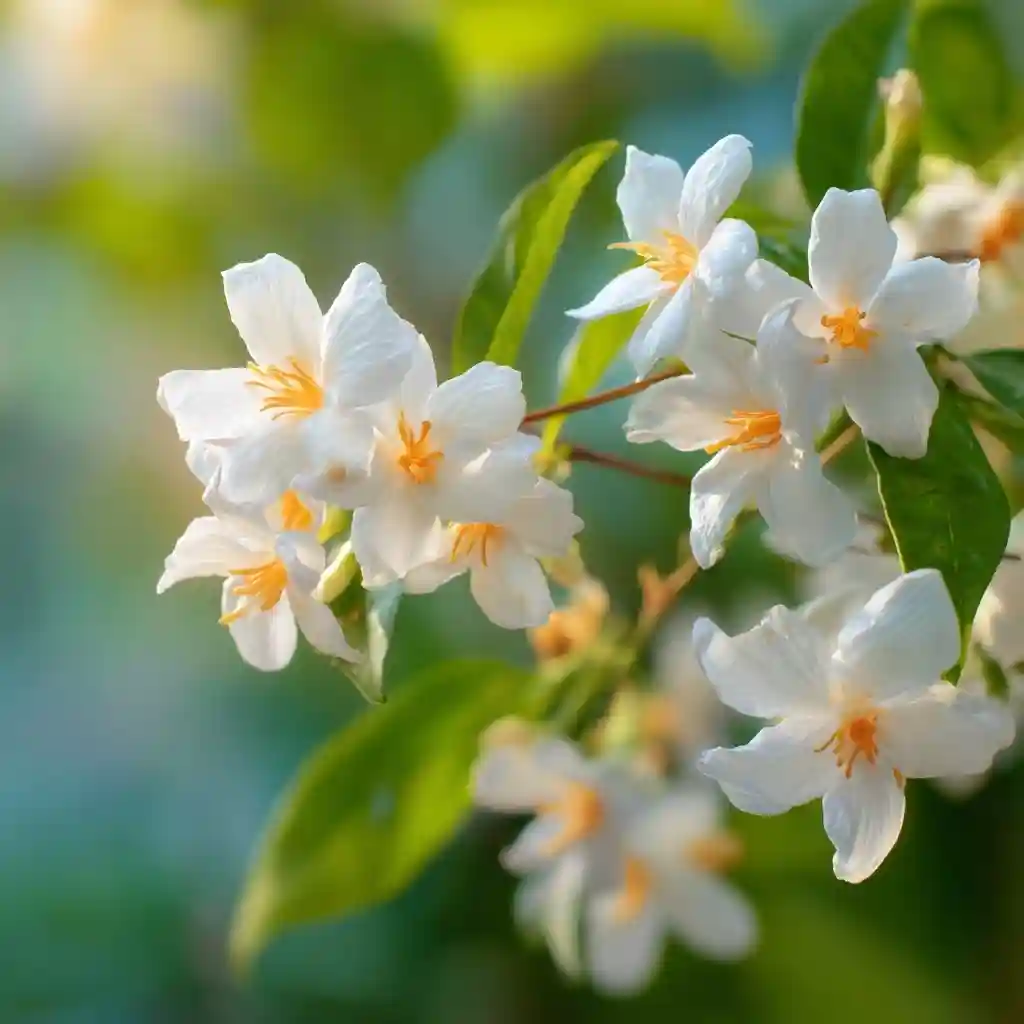
The pikake is one of the most beloved Hawaiian tropical flowers, known for its tiny white blossoms and intoxicating fragrance. A type of jasmine, this flower is cherished in Hawaiian culture and is often used to create delicate wedding leis and garlands.
Pikake blooms thrive in sunny, well-drained areas and produce clusters of flowers that release their strongest scent in the evening. Beyond their beauty, these blossoms symbolize love, purity, and romance, making them a meaningful part of Hawaiian celebrations and traditions.
If you’re walking near gardens or resorts at night, the sweet aroma of pikake is often the first sign that this elegant flower is nearby.
5. ʻŌhia Lehua
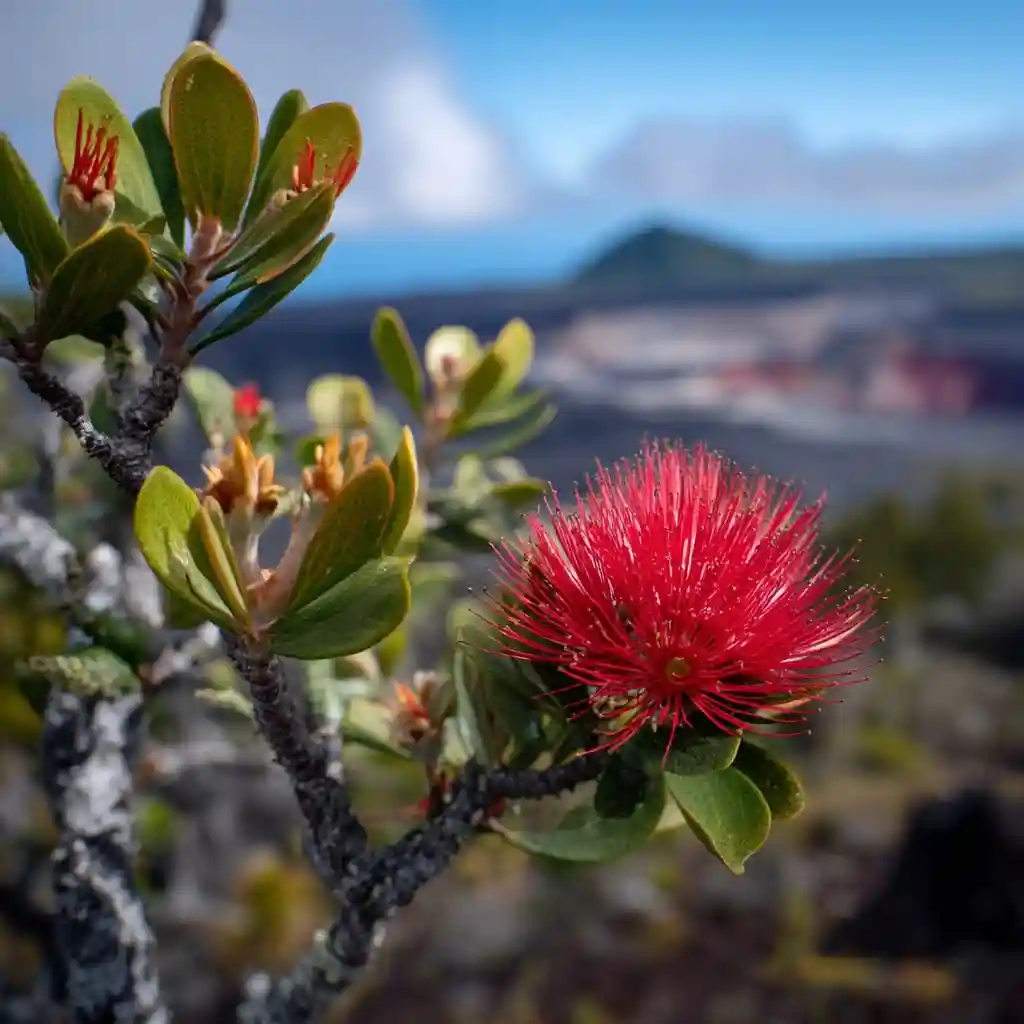
The ʻŌhia Lehua is a legendary Hawaiian tropical flower, instantly recognizable for its bright red or yellow pom‑pom‑like blooms. This native flower grows on the ʻōhia tree, which is one of the first plants to appear on new lava flows, helping regenerate Hawaii’s volcanic landscapes.
Deeply rooted in Hawaiian mythology, the ʻŌhia Lehua is associated with the love story of the warrior ʻŌhia and the maiden Lehua, and it is often considered sacred to the volcano goddess Pele. Plucking the flower is said to bring rain, reflecting the couple’s eternal bond.
Beyond its cultural significance, the ʻōhia tree provides an essential habitat for native birds and helps preserve Hawaii’s delicate ecosystems.
6. Naupaka
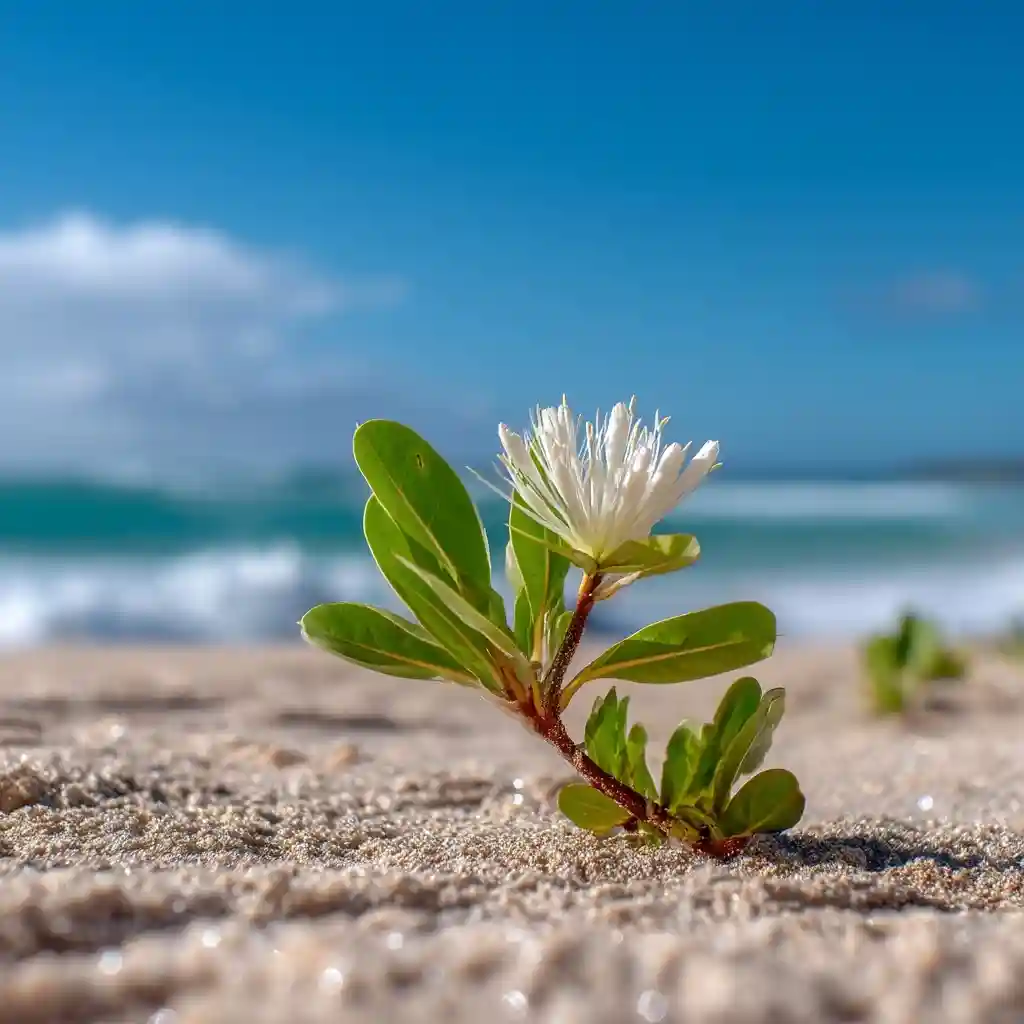
The naupaka is one of the most unique Hawaiian tropical flowers, easily recognized by its distinctive half‑flower shape. This bloom grows in two main varieties—beach naupaka (naupaka kahakai) and mountain naupaka (naupaka kuahiwi). Each produces only half of a flower, inspiring a Hawaiian legend of two lovers separated between the mountains and the sea.
Beach naupaka thrives along sandy shores and rocky coasts, helping to stabilize dunes, while mountain naupaka grows in higher elevations, adding subtle beauty to lush forest trails. Together, these flowers symbolize love, longing, and the natural connection between land and sea.
Gardeners often plant naupaka in coastal areas because it is hardy, salt‑tolerant, and provides excellent ground cover.
7. Heliconia
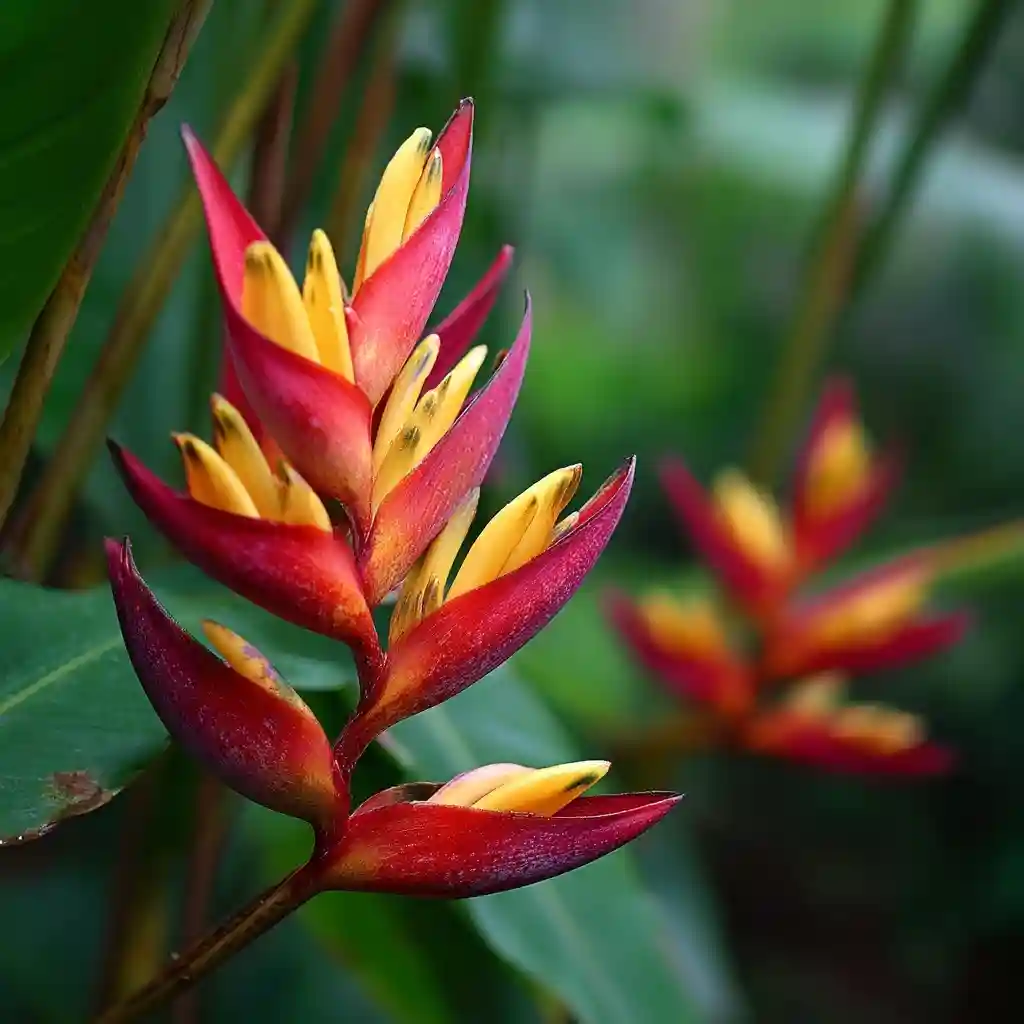
The heliconia is one of the most eye‑catching Hawaiian tropical flowers, admired for its bright red, orange, or yellow bracts that resemble lobster claws. Though native to Central and South America, heliconia thrives in Hawaii’s warm, humid climate, adding bold tropical flair to gardens and landscapes.
These striking flowers grow on tall stalks with lush, banana‑like leaves, often attracting hummingbirds and pollinators. Florists value heliconia for its long‑lasting blooms, which make dramatic centerpieces in tropical flower arrangements.
In Hawaiian gardens, heliconia is often planted near walkways or alongside other vibrant tropical plants to create a layered, exotic effect. Its ability to bloom multiple times a year ensures a continuous splash of color.
8. Hinahina
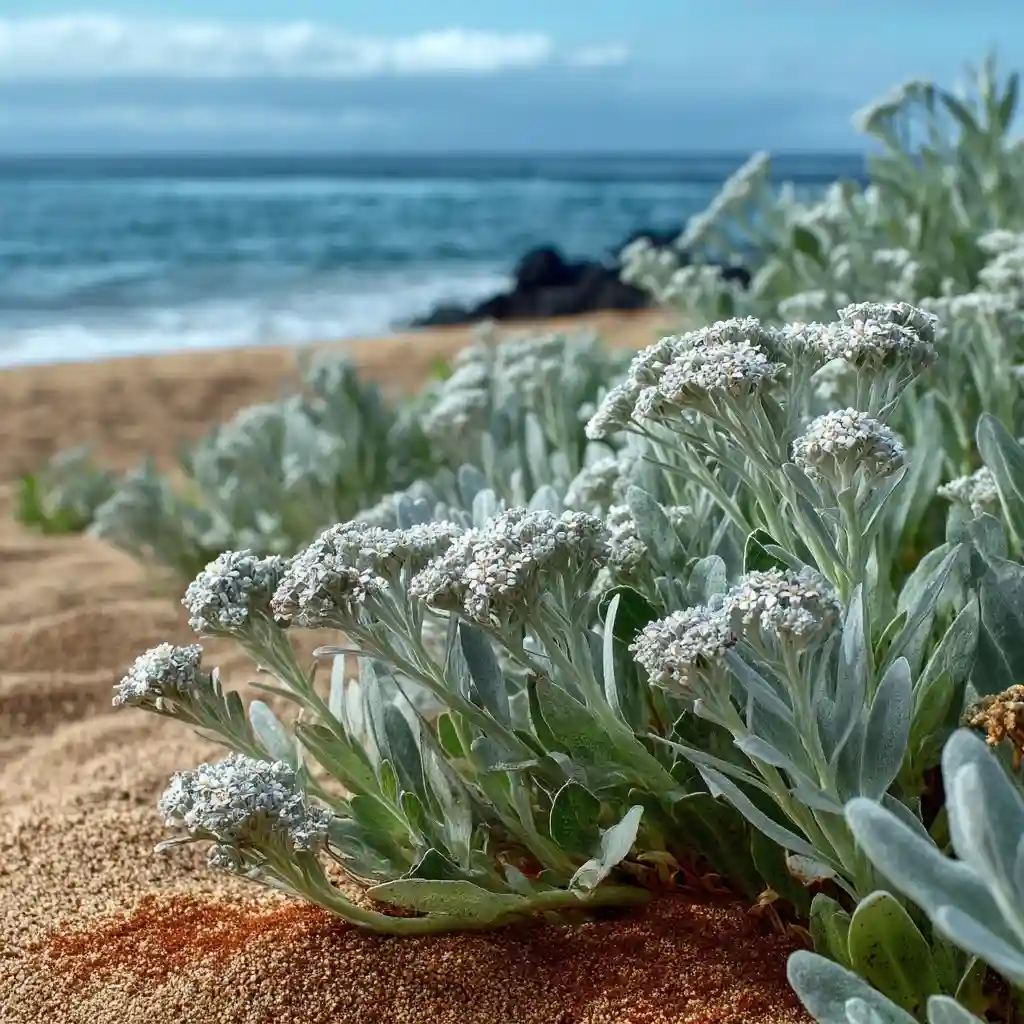
The hinahina is a delicate and silvery Hawaiian tropical flower that thrives in coastal and dry environments. Its name means “gray” in Hawaiian, reflecting its soft, silver‑gray foliage that shimmers under the sun. This plant produces tiny, pale flowers that add a subtle beauty to Hawaii’s landscapes.
Hinahina is not only admired for its visual charm but also for its resilience. It tolerates drought, salty winds, and sandy soils, making it an essential ground cover in coastal gardens and a natural choice for erosion control.
Culturally, hinahina symbolizes peace and remembrance. In some traditions, its silvery leaves have been used in leis for ceremonies and special occasions, adding a touch of understated elegance.
9. Koʻoloaʻula
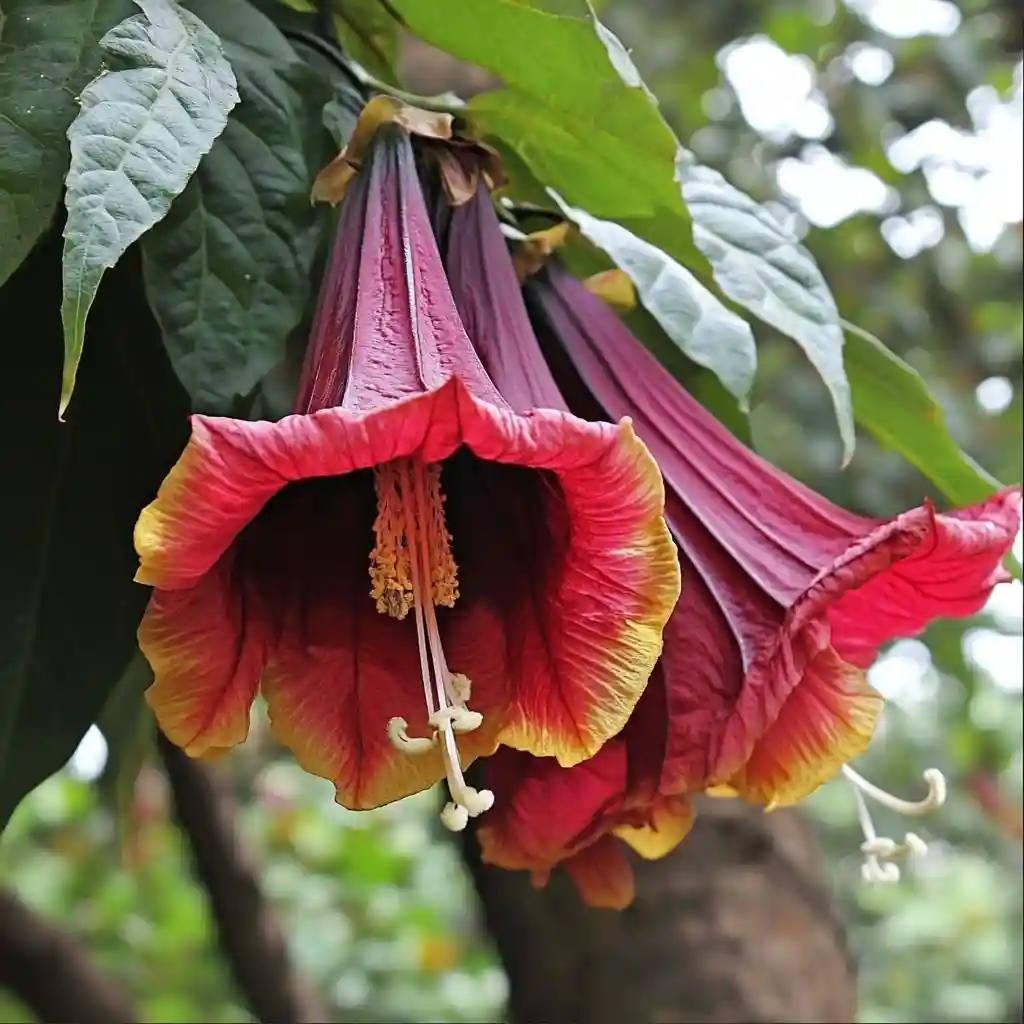
The Koʻoloaʻula is a rare and stunning Hawaiian tropical flower, belonging to the hibiscus family. Its deep red, maroon, or occasionally pink petals make it a standout among native flora. This plant is primarily found in dry forests and shrublands on select Hawaiian islands, where it thrives in sunny, well‑drained conditions.
Koʻoloaʻula is more than just beautiful—it’s an endangered species, with ongoing conservation efforts to protect its habitat. Its blossoms were historically cherished by Native Hawaiians for their ornamental value and are still admired in botanical gardens and native plant preserves today.
Growing this flower requires special care, but its rarity and vibrant color make it a prized addition to any native Hawaiian garden collection.
10. Anthurium
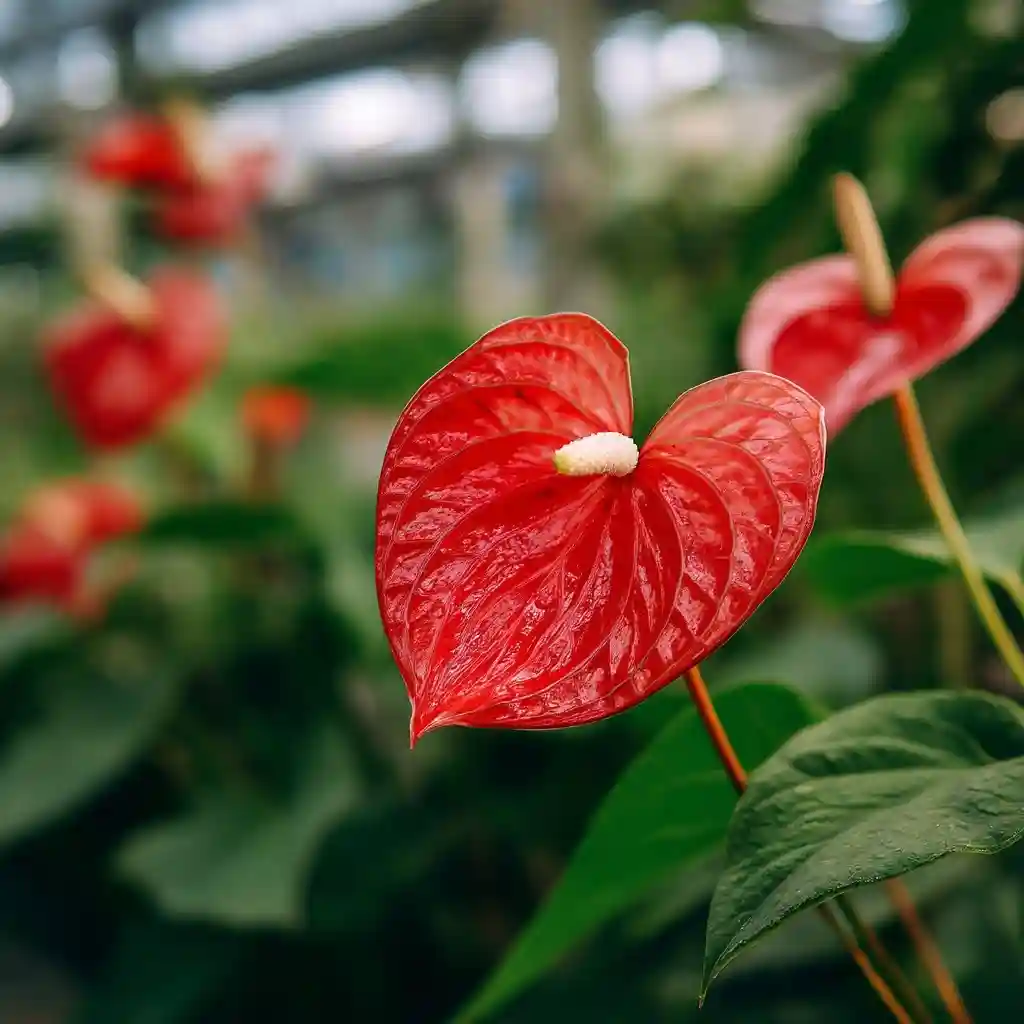
The anthurium is one of the most popular Hawaiian tropical flowers, instantly recognized by its glossy, heart‑shaped spathes in shades of red, pink, white, and even green. Although originally native to Central and South America, anthuriums have become a staple in Hawaii’s floral industry and are often used in leis, bouquets, and decorative displays.
These flowers thrive in humid, shaded environments and can bloom year‑round, making them a favorite for both gardeners and florists. Their unique shape and long‑lasting blooms have earned them the nickname “flamingo flower.”
Symbolically, anthuriums represent hospitality and warmth—perfect for welcoming guests with a touch of tropical charm. Many local farms grow them as an export, sharing a piece of Hawaii’s vibrant beauty with the world.
11. Hawaiian Gardenia (Nau or Nanu)
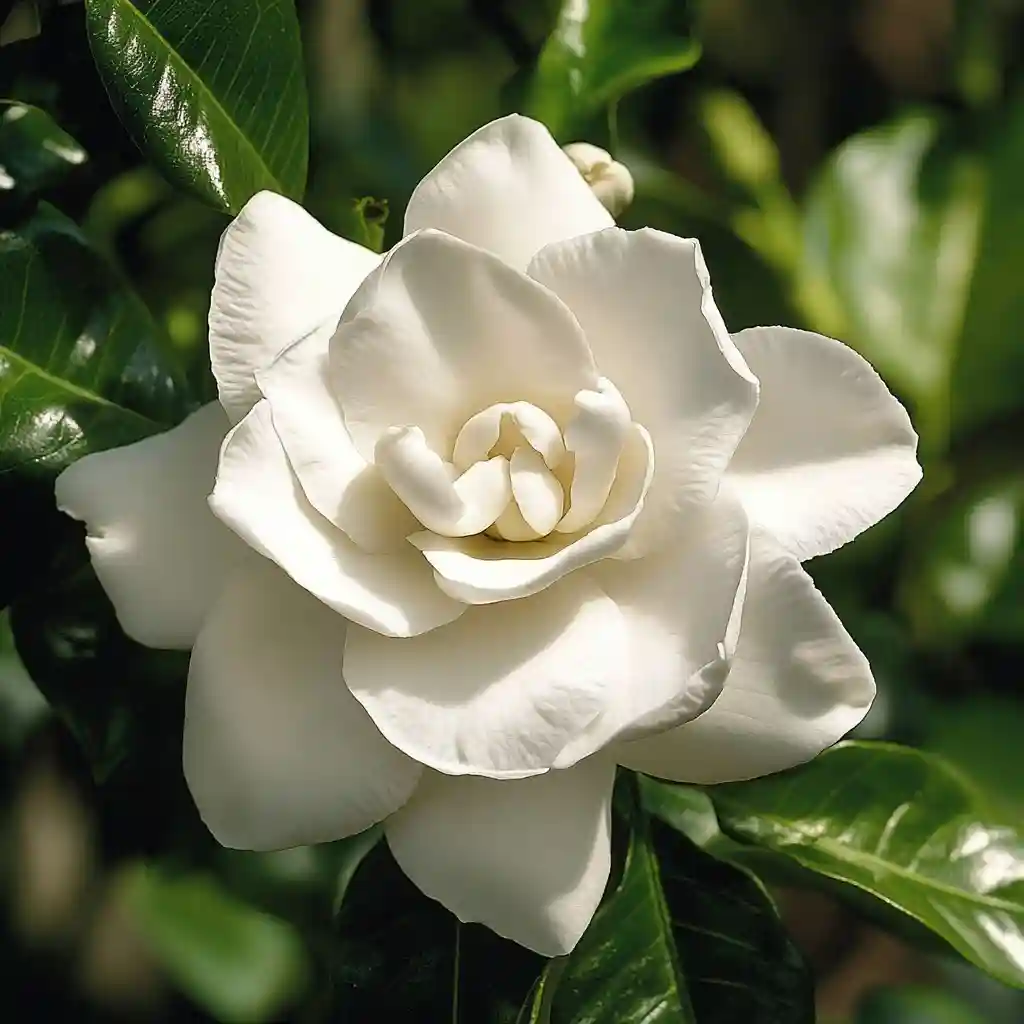
The Hawaiian gardenia, also known as nau or nanu, is a fragrant Hawaiian tropical flower admired for its creamy white petals and glossy green leaves. Unlike the common gardenia varieties found in many gardens, this native species grows in dry to mesic forests across the Hawaiian Islands.
Hawaiian gardenias bloom in warm seasons and are often used to craft elegant leis and garlands. Their sweet, lingering fragrance makes them a favorite in traditional ceremonies and cultural events.
Because this flower prefers well‑drained soil and ample sunlight, it can be challenging to cultivate outside its natural habitat. Still, its beauty and historical significance make it a treasured native plant.
12. Hawaiian Lily (Uki Uki)
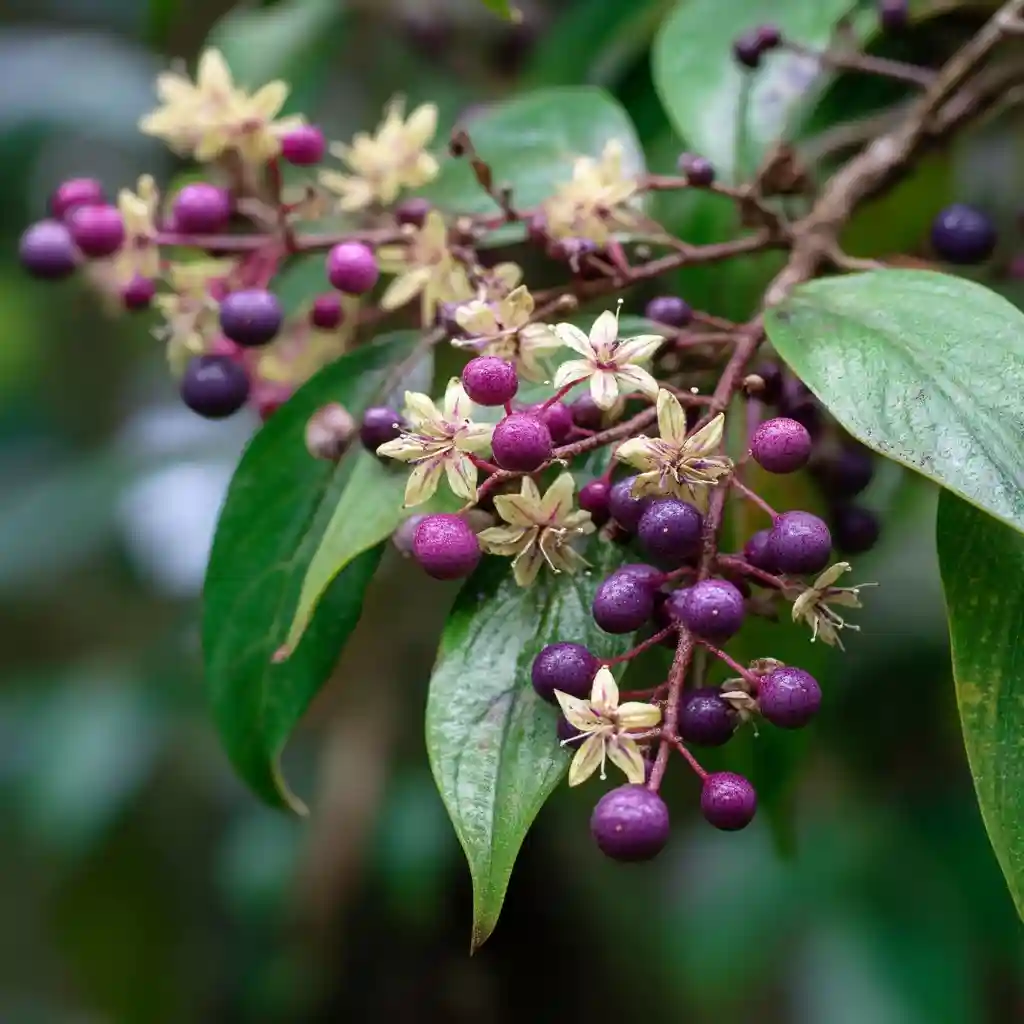
The Hawaiian lily, commonly called uki uki, is a charming Hawaiian tropical flower that produces clusters of delicate blooms, often followed by small purple or blue berries. This hardy native plant grows in forests, grasslands, and even rocky areas, thriving in the diverse landscapes of the islands.
Historically, Native Hawaiians valued the uki uki not only for its subtle beauty but also for its practical uses. The berries were once used to create natural dyes in shades of purple and blue for kapa (bark cloth).
In gardens, this low‑maintenance plant works well as a ground cover or accent in native landscapes. Its understated flowers may not be as showy as hibiscus or plumeria, but they contribute to Hawaii’s rich tapestry of tropical flora.
13. Hawaiian Poppy (Pua Kala)
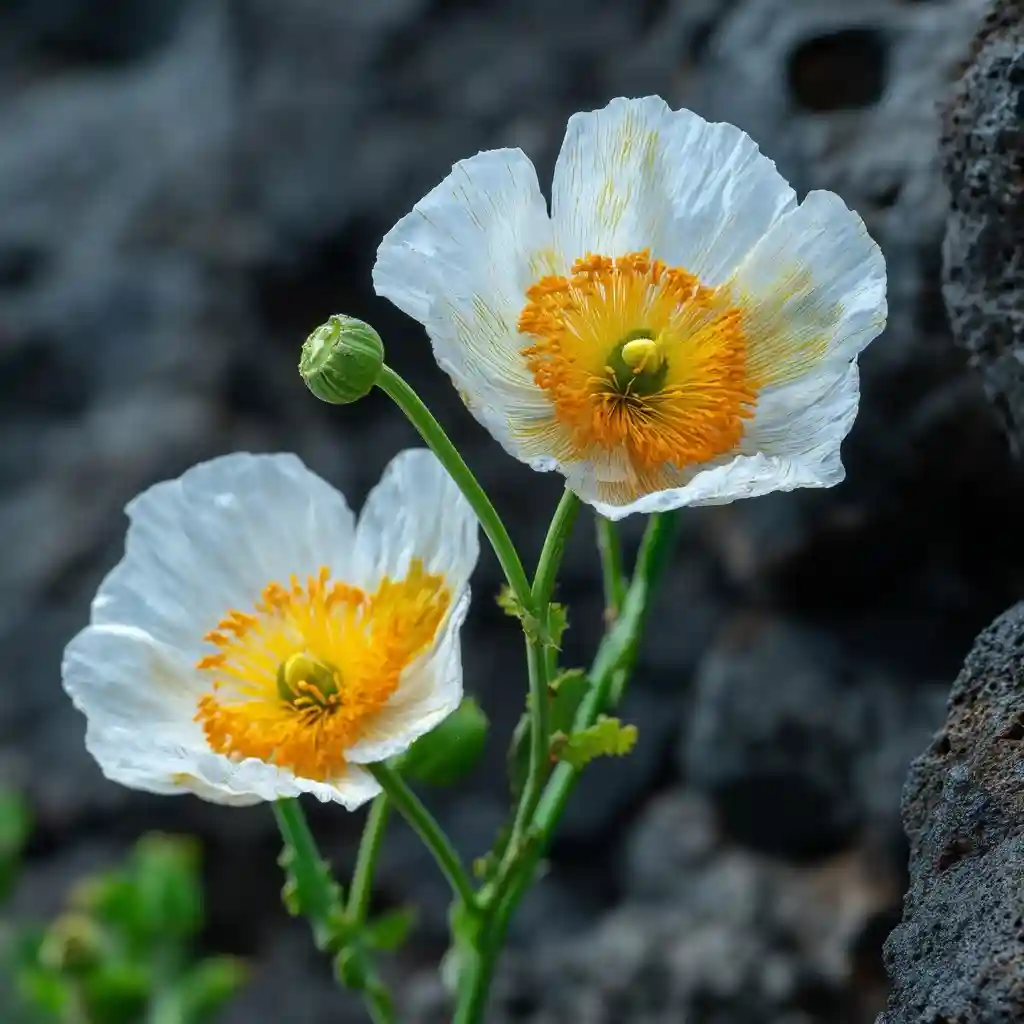
The Hawaiian poppy, known locally as pua kala, is a striking Hawaiian tropical flower with white petals and a vibrant yellow center. This hardy native species thrives in dry, rocky areas and is often found in volcanic landscapes where few other flowers can survive.
Despite its delicate appearance, the pua kala is well‑armed with spiny stems and leaves, which protect it from grazing animals. Its sap is toxic and was historically used in small amounts in traditional medicine.
This flower symbolizes resilience and adaptability in Hawaii’s diverse ecosystems. While not commonly used in leis due to its thorns, spotting a Hawaiian poppy in the wild is always a special treat for nature enthusiasts.
14. Hawaiian Red Cranesbill
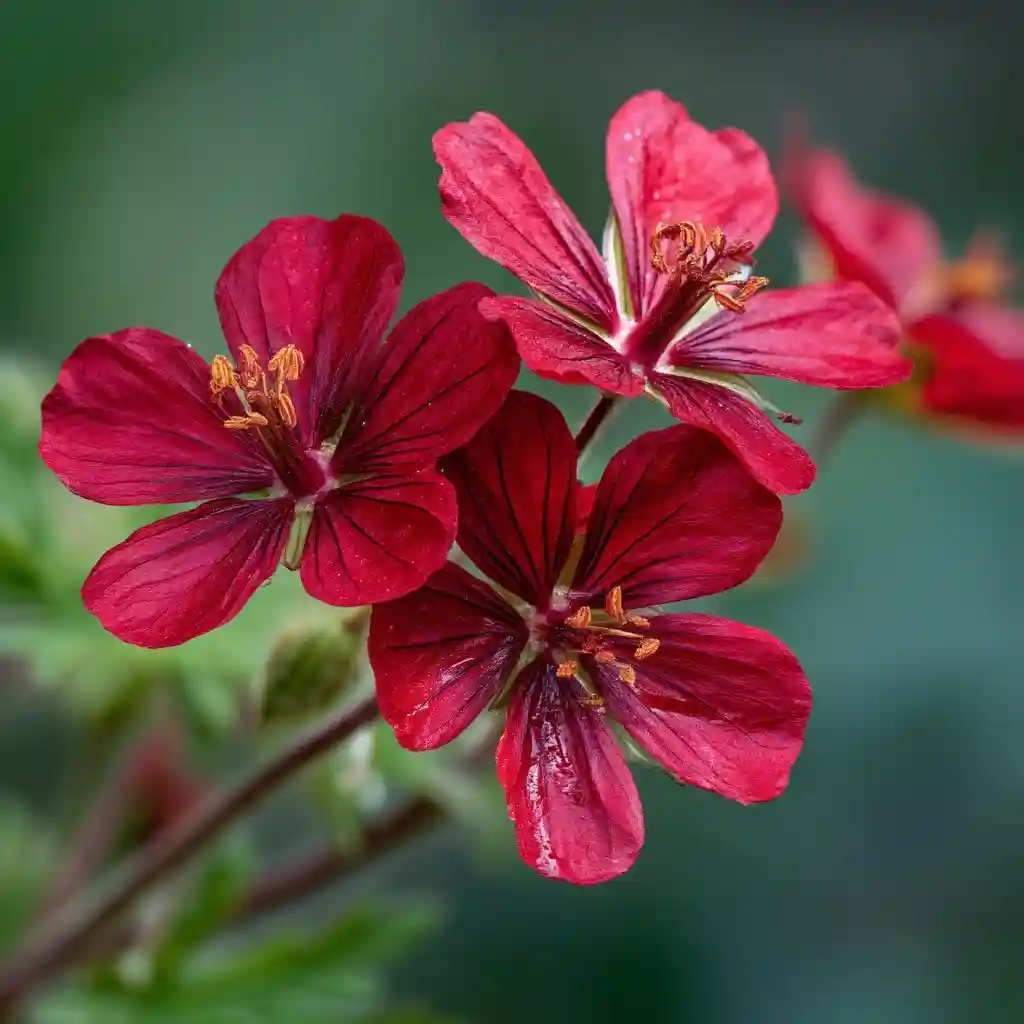
The Hawaiian red cranesbill is a rare and delicate Hawaiian tropical flower that belongs to the geranium family. Its small, reddish‑pink blooms thrive primarily in high‑elevation regions, such as the slopes of Haleakalā on Maui.
This native plant plays an important role in Hawaii’s fragile ecosystems, providing ground cover that helps prevent soil erosion in mountainous terrain. While its flowers are not as showy as hibiscus or plumeria, their subtle beauty adds charm to Hawaii’s upland landscapes.
Because the Hawaiian red cranesbill is sensitive to environmental changes, conservation efforts are essential to protect its habitat and ensure that future generations can continue to see this unique native flower in the wild.
15. Silver Geranium (Hinahina)
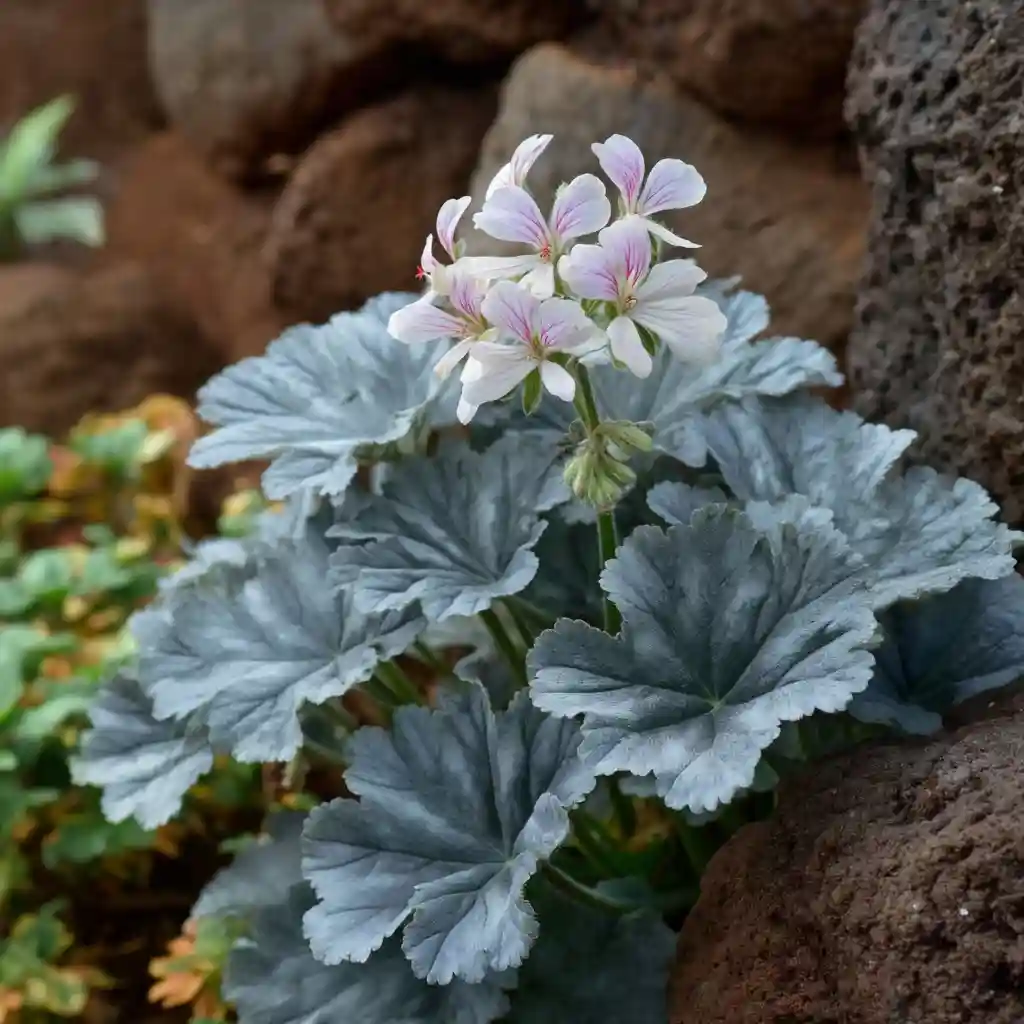
The silver geranium, also known as hinahina, is a soft, silvery Hawaiian tropical flower that adds subtle beauty to coastal and dry landscapes. Its velvety leaves shimmer in the sunlight, and it produces tiny, pale blossoms that enhance its understated charm.
This hardy plant thrives in sandy or rocky soils and is naturally salt‑tolerant, making it ideal for coastal gardens. In Hawaiian tradition, hinahina symbolizes love, remembrance, and peace. It has long been used in leis for weddings and ceremonial occasions, adding an elegant touch to cultural celebrations.
Its combination of resilience and delicate appearance makes the silver geranium a beloved plant for both native gardens and decorative landscaping.
Conclusion
Hawaii’s breathtaking landscapes are filled with Hawaiian tropical flowers that showcase the islands’ unique biodiversity and cultural heritage. From the fragrant plumeria and hibiscus to the resilient naupaka and rare koʻoloaʻula, each bloom tells a story of beauty, tradition, and connection to the land.
Whether you’re exploring botanical gardens, hiking coastal trails, or simply admiring flowers in a home garden, these blossoms bring the spirit of aloha to life. Adding some of these tropical plants to your own space—even if in pots or greenhouses—can be a wonderful way to enjoy a piece of Hawaii year‑round.
FAQs About Hawaiian Tropical Flowers
Which Hawaiian tropical flower is used most in leis?
The plumeria and pikake are among the most popular flowers for making leis due to their fragrance and soft petals.
2. Are all Hawaiian tropical flowers native to the islands?
Not all of them. While flowers like ʻōhia lehua and naupaka are native, others like plumeria and bird of paradise were introduced but thrive in Hawaii’s climate.
3. Can Hawaiian tropical flowers grow in other climates?
Many can grow in warm, frost‑free regions or in containers indoors. Plumeria and anthurium are especially popular for home gardens outside Hawaii.
4. What flower is the official state flower of Hawaii?
The yellow hibiscus (Hibiscus brackenridgei) is the official state flower of Hawaii.
5. Where can I see Hawaiian tropical flowers in bloom?
You can spot them in public botanical gardens, resort landscapes, hiking trails, and even along residential streets throughout the islands.
🌿 Love gardening inspiration? Follow me on Pinterest for bold plant ideas, tips, and seasonal color!
More Posts
